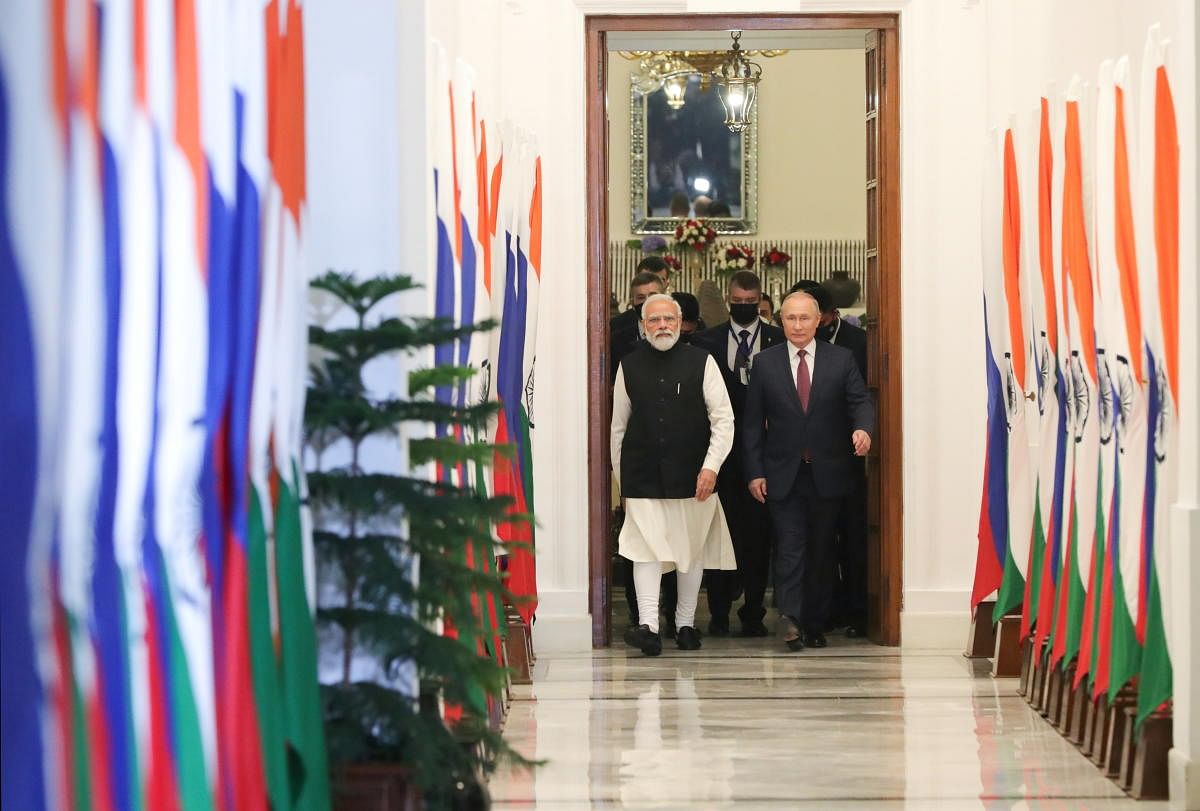
Moscow’s concerns about the Quad are increasingly emerging as a matter of discussion and debate. Russian Foreign Minister Sergei Lavrov during his visit to New Delhi in March 2021 called Quad the Asian NATO. Primarily, it signified Russia’s opposition to the creation of security blocs in the region. Moscow’s concerns about the Quad are also driven by the China factor, India-Russia relations and the evolving contours of Moscow’s role in the Asian region.
Since 2017, we have witnessed the rebooting of the Quad grouping comprising India, the US, Japan and Australia. Russia sees the Quad as an anti-Chinese construct and hence primarily targeted at China. From the Russian perspective, challenging China is akin to challenging the basics of a multipolar world. Close on the heels of the first Quad summit that took place in March 2021, Russian Foreign Minister Sergei Lavrov visited China, Pakistan, South Korea and India to re-emphasise Russia’s relevance in the region. Lavrov’s visit to Pakistan raised some concerns in India, especially the potential possibilities of greater Russia-Pakistan defence and strategic cooperation.
The major Russian arguments about the Quad are as follows: One, that Quad reflects the United States’ persistent, aggressive and devious policy intended to ensnare India in its anti-China game. Secondly, that Quad is meant to undermine the close partnership between India and Russia. Third, that Quad is divisive and undermines the centrality of the ASEAN grouping of South-East Asian countries.
The ‘rediscovery’ of the Quad by the Trump administration signified a reiteration of America’s Indo-Pacific strategy. Trump perceived the Indo-Pacific as a crucial theatre of competition, which is more maritime-based. Moscow has also expressed its reservations about replacing the Asia-Pacific construct with that of the Indo-Pacific.
Russia perceives the Quad as a potential game-changer that could impact Moscow’s role in Asia, especially in terms of its economic and political interests in Asia. The growing economic, political and strategic complementarities in Moscow-Beijing relations has evolved over the years. Though Russia has its concerns about China, yet it perceives Beijing as a partner against the Western liberal order. Russia perceives China as an important anchor in the creation of a multipolar world. Hence, the Quad represents an attempt to isolate Russia as well as China.
From its perspective, Moscow has promoted the idea of a Greater Eurasian Partnership as a platform for greater Asian engagement, through forums like the Shanghai Cooperation Organisation (SCO) and Eurasian Economic Union (EEU). The underlying sense is that Russia seeks to enhance its visibility and relevance by leveraging its geographical location to act as a bridge between Europe and Asia. Russia has been making a case for greater cooperation between the ASEAN and the EEU.
Russia also has its divergencies with China, though it tends to play them down. Russia does not go along with China’s self-proclaimed nine-dash line, for instance, as it would be detrimental to the Russian oil giant Rosneft’s position in Vietnam and also weaken its own Exclusive Economic Zone (EEZ) claims in the Arctic region. Overall, Russia maintains a neutral stance on the South China Sea dispute.
Moscow should know better that India’s engagement with the Quad is also the outcome of New Delhi’s growing concern with China’s territorial claims along the border. In terms of India’s role in the Quad, Russia realises that India matters. While India is one of the top arms importers in the world, Russia accounts for 49% of those Indian imports. The purchase of the S-400 anti-missile system is a huge decision that could attract US sanctions against India in Washington’s bid to isolate and punish Russia. From Moscow’s perspective, the strengthening of the US-India strategic and defence cooperation could dent Russia’s interests in India. Hence Moscow seems to make a case for New Delhi to prioritise the SCO, and even the BRICS grouping, rather than the Quad.
Moscow sees no contradiction in its ties with China on the one hand and its ties with India on the other. It desires that extra-regional actors like the US are deterred from gaining any additional strategic advantages which could be detrimental to Moscow’s interests in the region. Russia opposes any anti-China alliance, which President Putin perceives as “un-Asian”. India, on its part, does not consider the Quad to be a NATO-like military alliance. Russia considers the Quad as a project of US strategic competition in the region. From India’s perspective, Russia’s ability to convince India about the need to distance itself from the Quad is contingent on Moscow’s ability to leverage its influence with China.
Another dimension is that the interests of India, China and the US with respect to the Indo-Pacific have revolved around their respective visions, interests, strengths and weaknesses. Hence, India would have reservations about perceiving the Quad as an ‘alliance of democracies’ targeted at China. India is concerned about an aggressive China, especially across its borders. Yet, India does not perceive the Quad as a collective security arrangement. The Quad presents both dilemmas as well as possibilities for India.
The underlying sense is that the Quad’s strategic imprint is bound to grow, especially with the Chinese tentacles spreading across the Indo-Pacific region. The flip side is that the more assertive China gets on the border dispute with India, the greater will be India’s propensity to fall back on the Quad. Hence, Russia would have to be more receptive and sensitive to India’s concerns on China’s territorial aggression. The challenge before India is to strike the right balance between Russia and the Quad.
(The writer is Professor, Department of International Studies, Politics and History, Christ (deemed-to-be) University, Bengaluru)